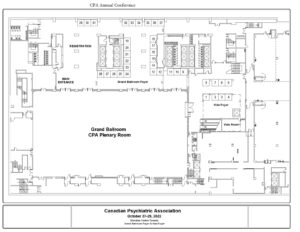PS1a – Application of a Trigger Tool in Near Real-Time to Inform Quality Improvement Activities in Acute Mental Health Services
Le vendredi 28 octobre
14:30 – 15:30 (N/A)
Salle de réunion : Cedar (Mezzanine)
Zoe Findlay*, MHSc; Nicole Thomson, PhD, OT; Brian Wong, MD, FRCPC; Andrea Waddell, MD, MEd, FRCPC
Rôles CanMEDS :
- Collaborateur
- Leader
- Professionnel
À la conclusion de cette activité, les participants seront en mesure de : 1) Understand the value of the real-time surveillance method in capturing harmful events in psychiatry; 2) List the rates of preventable events and the most common types of events; and 3) Describe the most common contributing factors to preventable events.
Despite a strong focus on reducing violence and preventing suicide, mental health services have lagged behind the rest of the health care system in patient safety practices. Many mental health facilities rely on voluntary reporting systems and random chart audit, even though these methods are known to capture less than 40% of patient harm. Real-time (or prospective) surveillance has been used in the acute care setting as a gold standard method for detecting and describing adverse events. This study is the first-ever application of this method in a psychiatric setting and provides a detailed report of safety incidents arising during care. An embedded observer (a trained psychiatric nurse) spent 12 weeks on an acute care psychiatric inpatient unit, attending rounds, reviewing charts with a trigger tool, and taking reports from staff. A multidisciplinary team reviewed each event that arose, using a structured scoring system and the Joint Commission classification of root causes to describe possible contributors. We reviewed 80 incidents with a preventable harmful event rate of 15.41 events per 1,000 patient days. The most common types of preventable events were aggressive behaviour, delayed care and medication administration issues. Common contributing factors included communication among providers, application of policy into practice, staff workload, and staff training. The presentation will provide a breakdown of events and root causes. This is the first detailed look at patient safety incidents in psychiatry and generates valuable information for mental health practitioners and leaders when determining priorities to improve patient safety.
Références :
- Wong BM, Dyal S, Etchells EE, et al. Application of a trigger tool in near real time to inform quality improvement activities: a prospective study in a general medicine ward. BMJ Qual Saf 2015;24:272–81.
- Sajith SG, Fung D, Chua HC. The mental health trigger tool: development and testing of a specialized trigger tool for mental health settings. J Patient Saf 2021;17:e360–e366.

